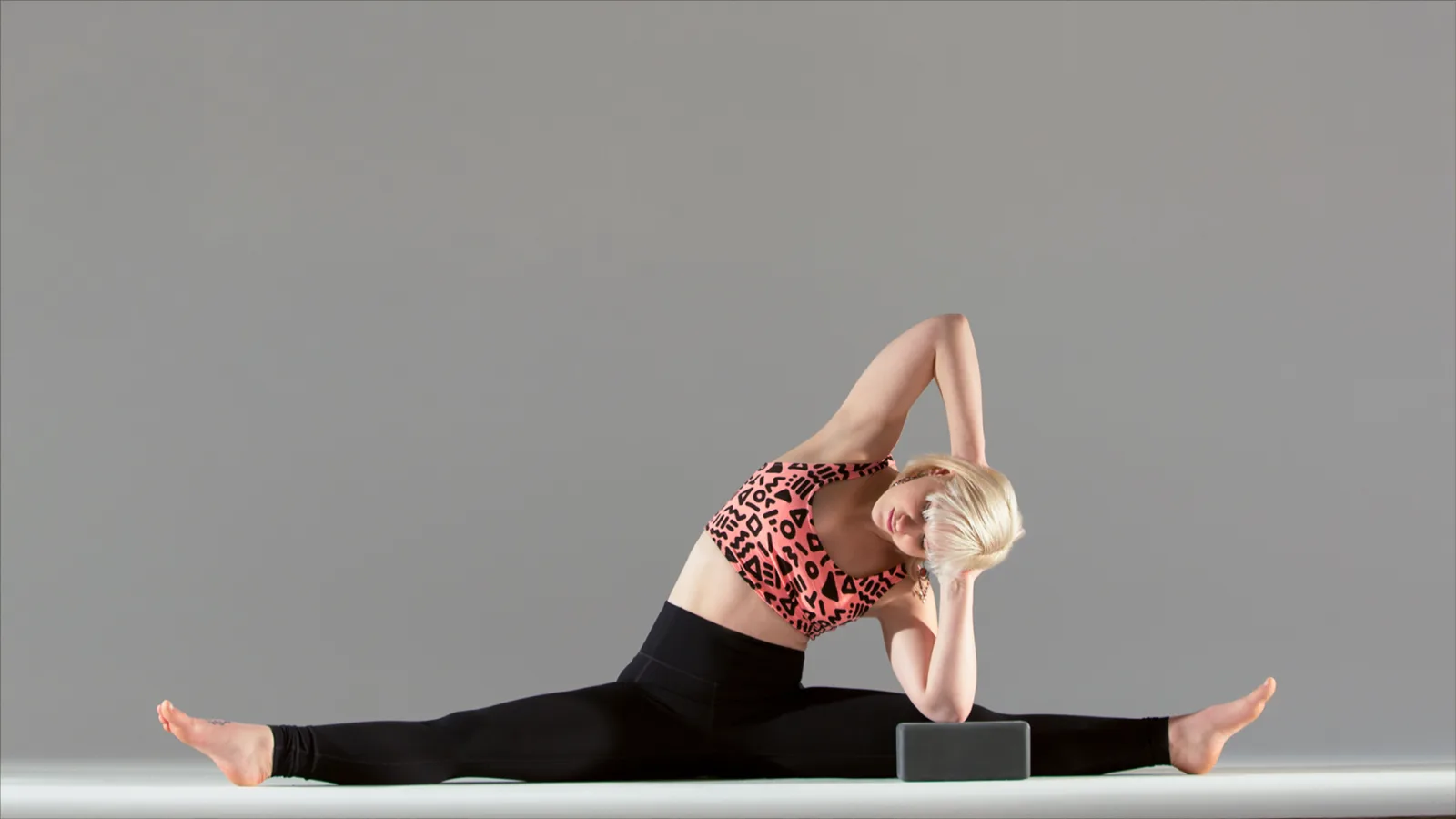
Yin Yoga to Counteract Computer Posture
We are chronically static as a culture, even in our hyperactivity. What that means is that even in our frantic activity—emailing, texting, driving from A to B, and eating a quick meal over our computer or steering wheel—the body is essentially holding one pose. For simplicity’s sake, I’ll call this pose “computer pose.”
Computer pose consists of an overly rounded spine, forward-slumping shoulders, and a displacement of the skull that over-extends the neck. These are unfortunate misalignments of the major axial (i.e., head and torso) structures to be holding for long periods of time.
Several things happen when we round the spine and jut the head forward—most notably, the collapse of the chest cavity. In this position, respiration can be severely inhibited with so-called accessory breathing muscles (including the upper trapezius muscles of the neck) having to take on more of the work of moving the ribs as you breathe. Over time, the overuse of these muscles can result in them shortening or tightening, which will in turn only further encourage you to hold the “computer pose” and can lead to the dreaded “tech neck,” the soreness and discomfort you can get after texting, driving, or working at your computer for long periods of time.
In addition to inhibited respiration and habitual poor posture, there are a number of other negative physical effects that can result from sitting in this position, including the following:
Pressure on the cervical spine
Compression of the lumbar spine
Tightening of the psoas
Over time, these effects can limit mobility throughout the body. And that limitation, according to “The International Journal of Psychophysiology,” can contribute to a hormonal change which creates a nervous system response mimicking the body’s response to danger. Afferent nerves communicate physiological changes to the nervous system, and a crouched or slumped posture can suggest to the nervous system that you’re hiding from an attack (rather than just staring at a computer screen). In other words, your posture gives your brain a lot of information about how to behave and what hormones to supply the body. And if you’re frozen with a crimped, collapsed torso, it’s likely that the internal conversation isn’t contributing to a mental state of ease or lightness. Too much time in this posture might instead leave you feeling anxious.
A sustained release of this muscular holding pattern, then, can help us to free our psyches as well as our bodies from computer pose’s negative effects.
Because of the chronic nature of our computer screen use, a quick stretch, arm swing, or massage isn’t going to be enough to completely counteract the posture’s long-term effects on the body and mind. Rather, those of us experiencing the locked-up effects of computer pose need a sustained release from that position. In comes Yin—Yin Yoga, that is. Based on the principles of yin and yang from Chinese philosophy and a myofascial (as opposed to a musculoskeletal) view of the body, Yin Yoga focuses on what it considers the “yin tissues.” These tissues—the supporting structures of our bodies—include bone, cartilage, ligaments, tendons, and fascia. Proponents of Yin Yoga, along with proponents of myofascial release therapy, hold that through the application of sustained pressure, frozen areas of the body (such as those affected by computer pose) can be progressively restored to a supple, pliable, and (most importantly) adaptable state. When the support structures of the body are fully functional, which in most cases means toned and responsive to impulse, we can more effortlessly adapt to the needs of the moment. In other words, we can be present and engaged with life.
Because of the chronic nature of our computer screen use, a quick stretch, arm swing, or massage isn’t going to be enough to completely counteract the posture’s long-term effects on the body and mind.
Here is a Yin Yoga sequence you can try for yourself. You can begin this practice by invoking Yoga Sutra 1.14, which asserts that dedicating time and focus is the way to achieve perfection in your practice. It takes dedication and love to untangle our bodies from the knotting effects of doing more and doing it faster. So remember why you’re doing this. As you follow this sequence—offering yourself up to the long holds of each pose in furtherance of more ease in your body and your mind—you will be devoting a part of your day to the pursuit of your highest Self.
This Yin Yoga sequence is designed to address what myofascial release proponents term the deep front line of the myofascial body. This includes, among other things, the psoas, quadratus lumborum, and respiratory diaphragm. The deep front line is the fascial web that proponents associate with core stability—a crucial component of maintaining healthy posture and breathing patterns. (For more information on the possible implications of this web, check out Healing Arts Continuing Education. For an overview of current scientific research on fascia, check out “Does Fascia Matter?” by Paul Ingraham at PainScience.com.)
Toe Stretch
Practice this two times for one minute each time, pausing in vajrasana (thunderbolt pose) between sets.
Kneel with your knees and ankles together and your toes tucked under. If the pinky toes do not tuck, don't sickle your ankles in order to get the pinkies down. Keep the heels evenly aligned over the big toe joint.

If kneeling doesn’t work for you, you can stand with one foot pressed against the edge of a block, and bend your knee as deeply as you can while keeping the heel down. Do this for each foot.
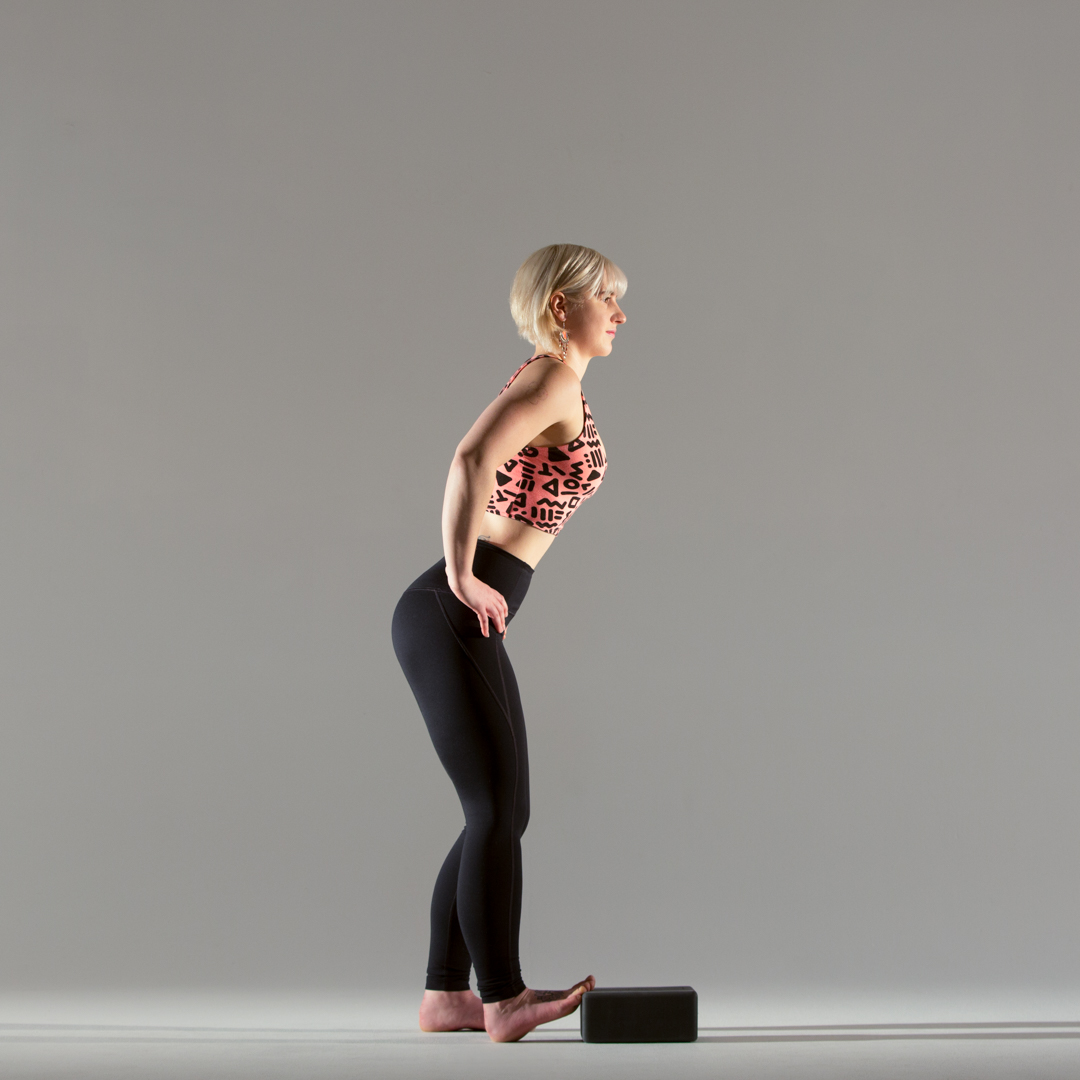
Supported Bridge
Stay in bridge for four minutes.
Place a block at its medium height under your pelvis (not the lumbar spine).
You can practice this pose with legs straight or bent.

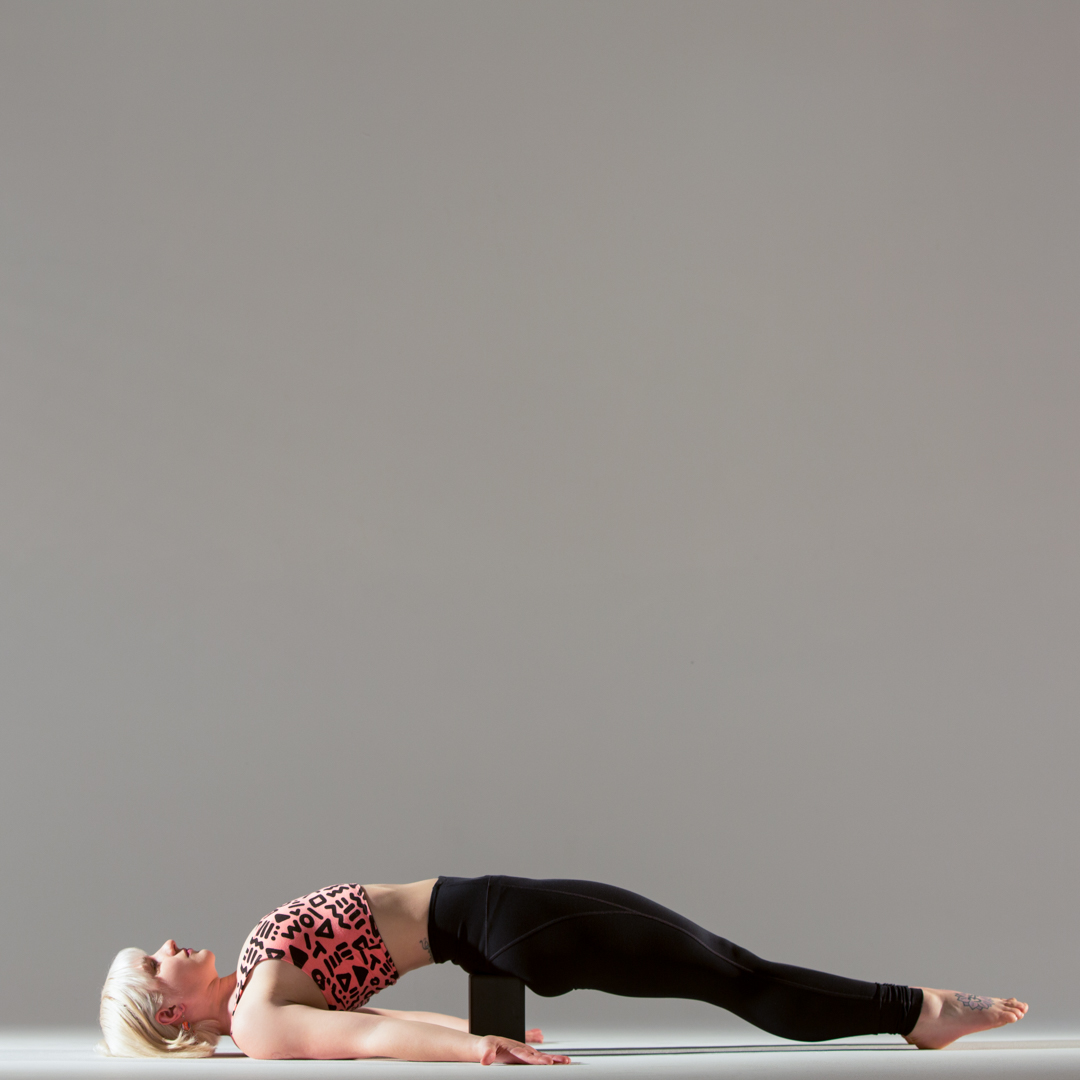
Supine Stag
Stay for four minutes on each side.
Lie with your feet flat on the floor, wider than hip-width, with knees bent. Lower both knees to one side, keeping your legs offset.
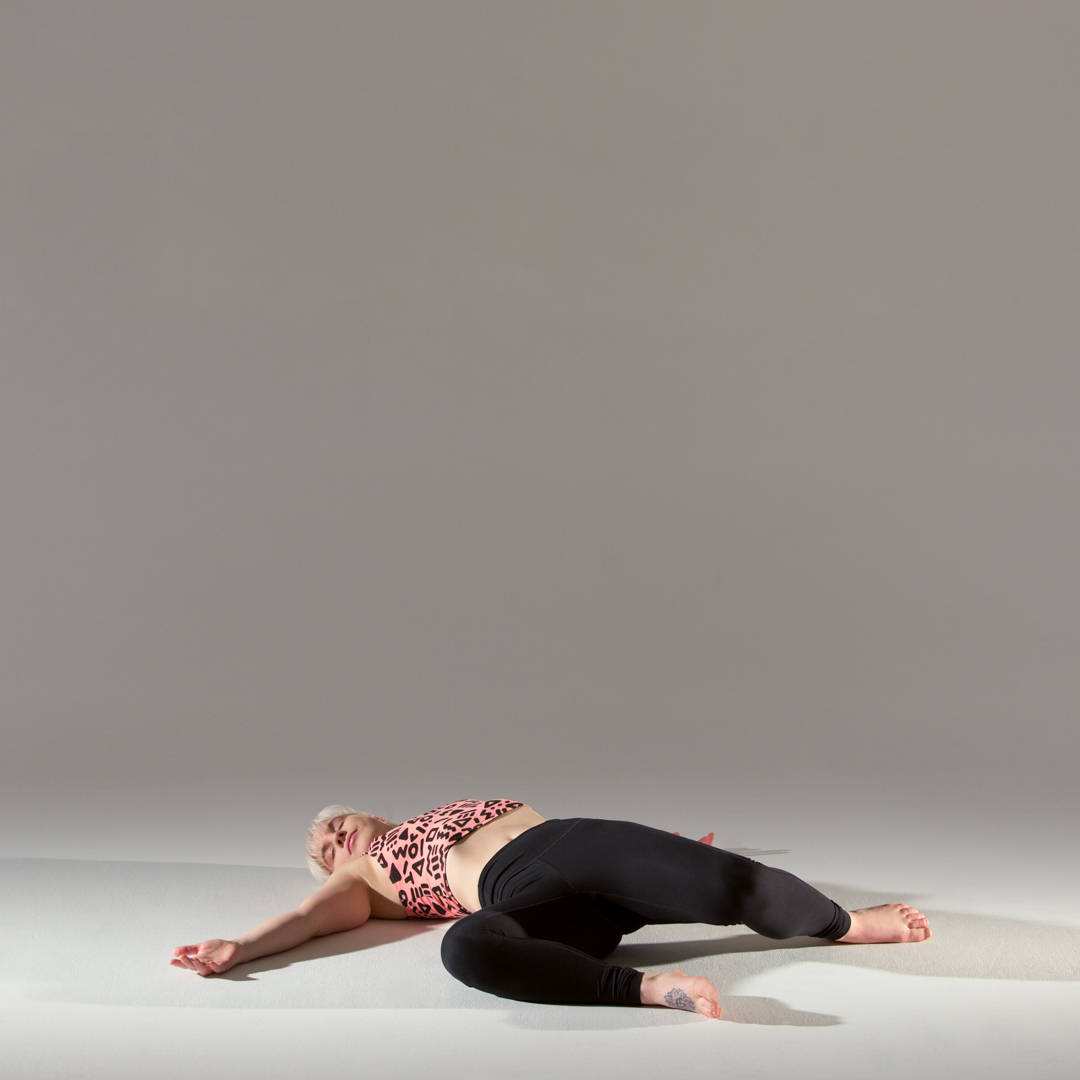
Dragonfly (sidebending and forward bending variations)
Stay for four minutes on each side, and for three minutes in the forward variation.
Sit in a wide-legged position on the floor, using a blanket or bolster under your hips only if you are unable to sit upright without it. (Keep in mind the point of this practice is muscular passivity.) Place a block anywhere along the inside of one leg, positioned to support your arm, and lower your elbow (or your hand if your elbow doesn’t reach) onto the block. You can support your head in that hand if your elbow is on the block, or you can let your head shift to the side. Cradle the back of your head with the opposite hand, and enjoy the lateral stretch.
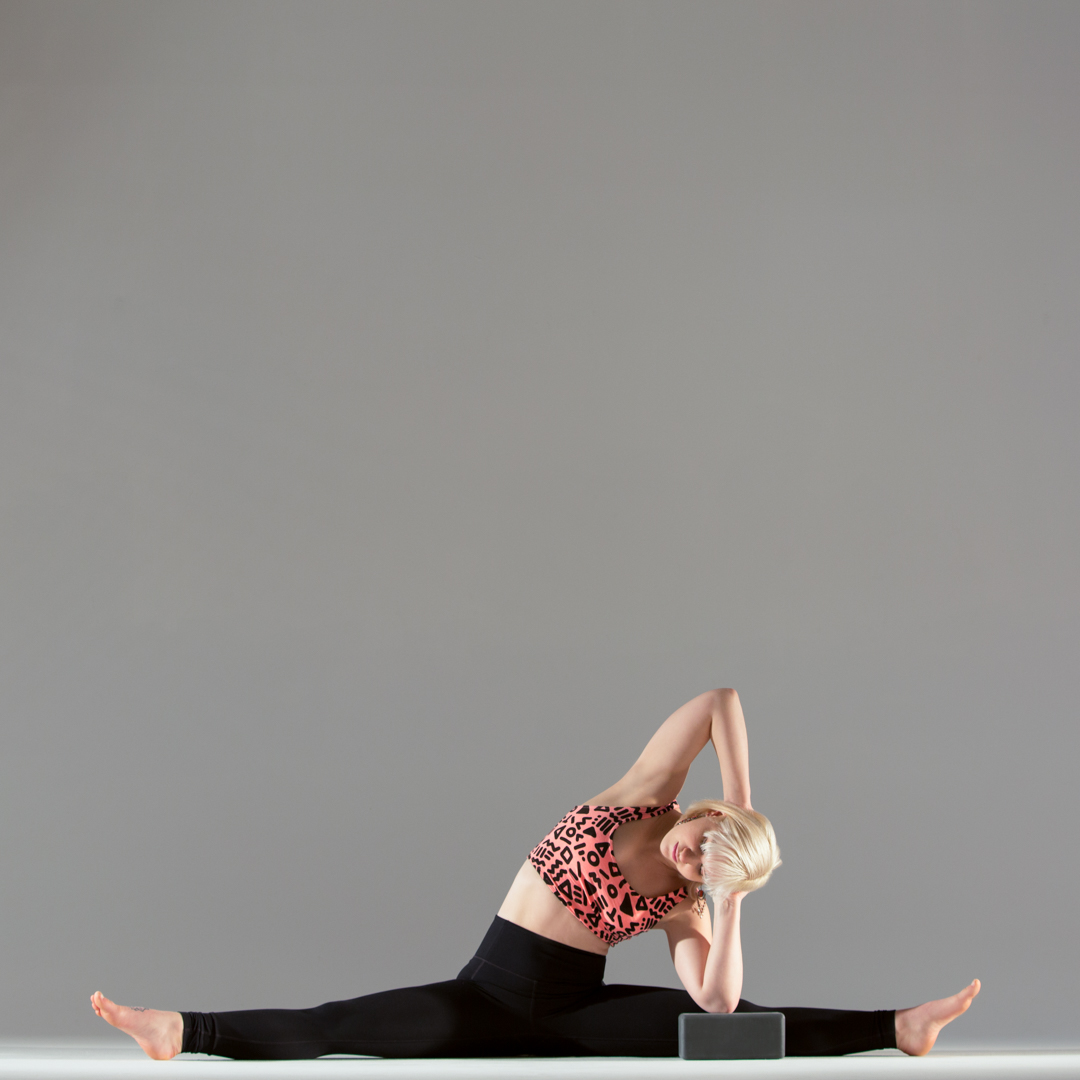
Repeat on the second side, and then repeat to the center, folding forward between your legs.
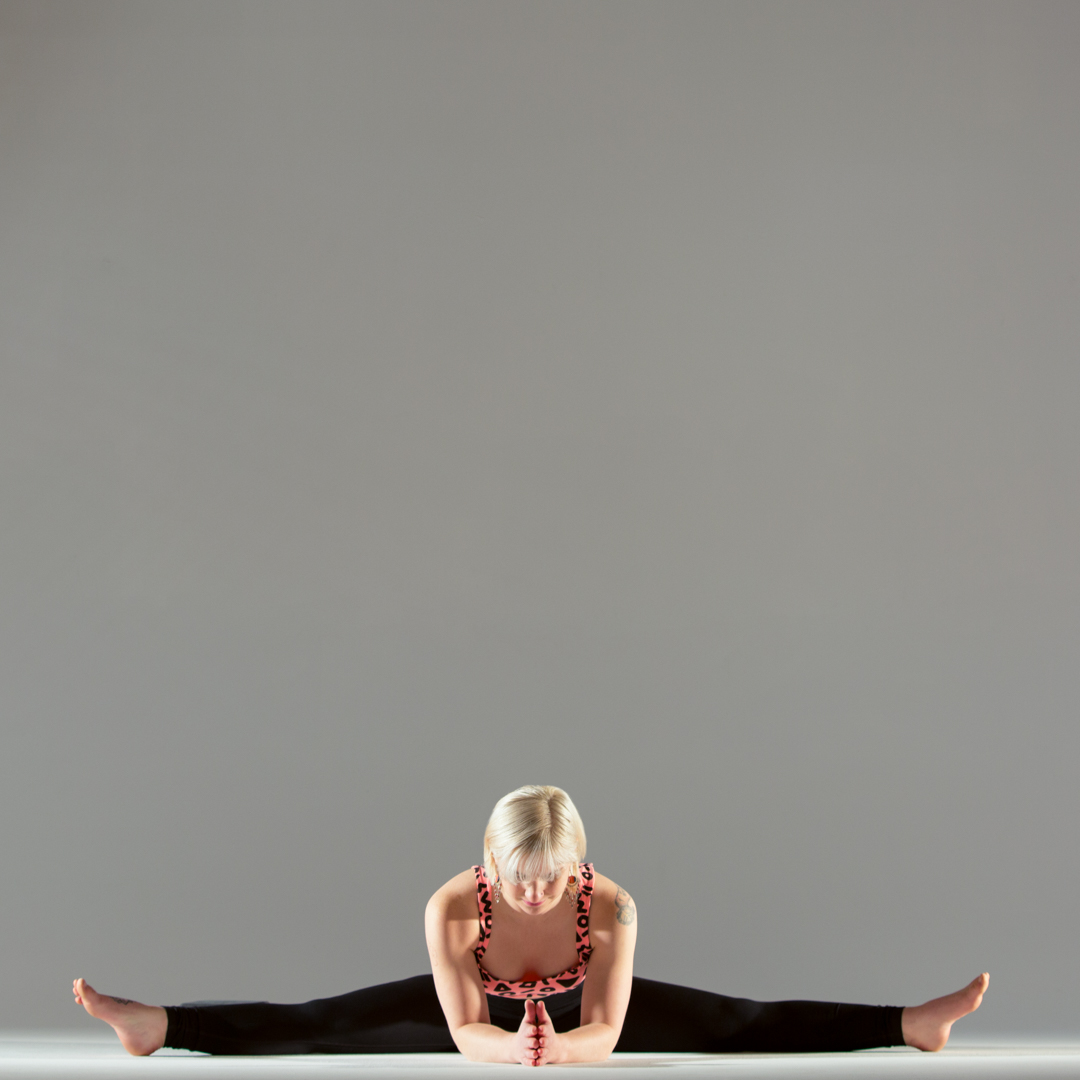
Supported Fish
Do two rounds (blocks on medium/high height for the first round and on low/medium height for the second round). Stay for three minutes each round.
Lie back with your spine supported by two blocks: The first block on its medium height under the bottom tips of the shoulder blades (long edge perpendicular to your spine), and the second block on its tallest height supporting your skull.
For the second round, lower each block to the next lowest height.

Skull Support
Stay for three minutes.
Lie back with a block on its medium height supporting your head. Place the edge of the block at the base of your skull rather than under your neck (so that your chin is tipped down slightly). If this is too uncomfortable, use a folded blanket under your head instead of the block.
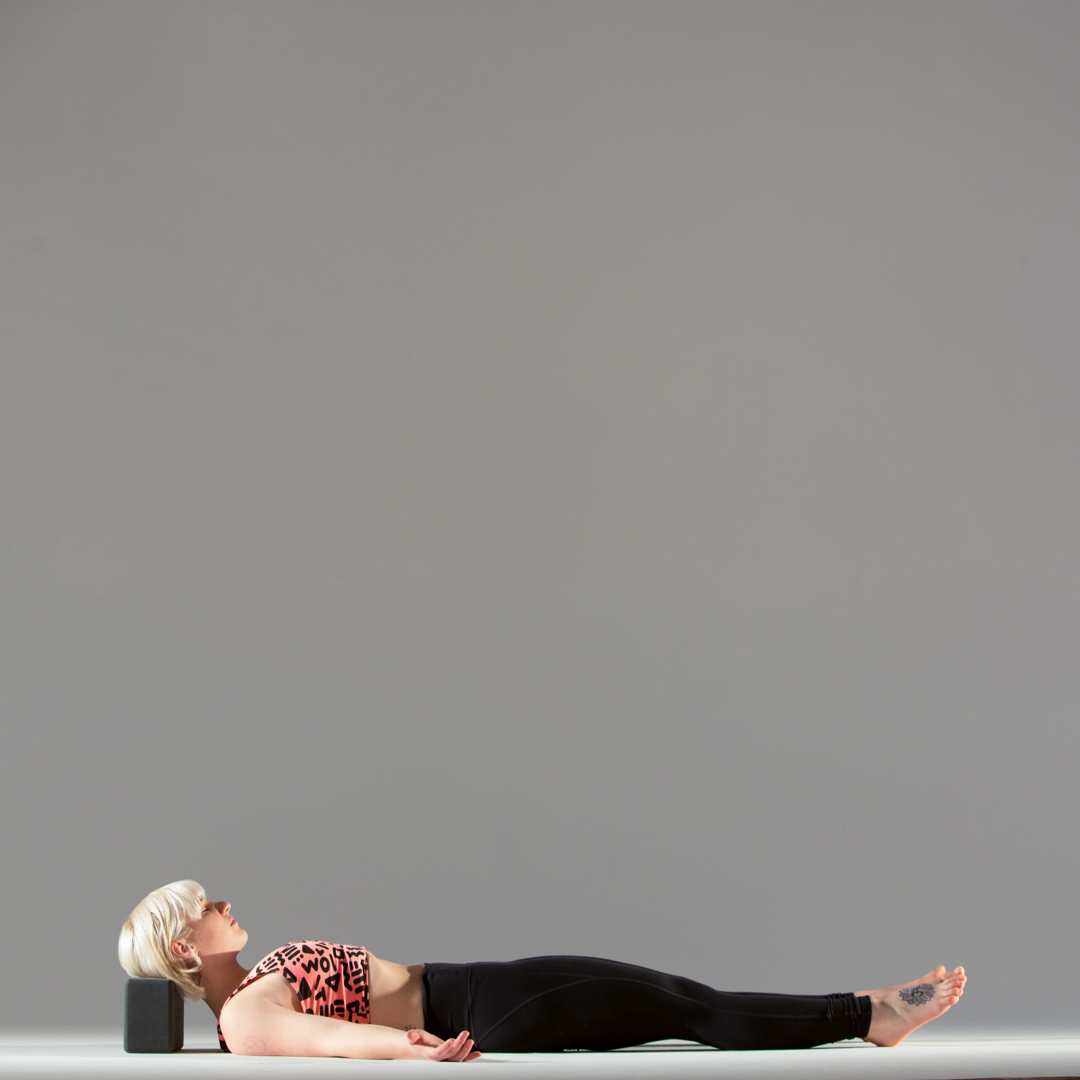
Savasana
Stay for six minutes.
Feel free to support the backs of the knees or add some cushioning for the skull with a thin blanket.
Try this Yin Yoga practice in the morning, before your muscles have engaged in much activity. Yin is a practice best served cold, that is, on muscles that have not been warmed up. The focus in yin is to stress and thereby restore elasticity to the connective tissue, not to stretch muscles. (Warmed-up muscles are “awake” and engaged, therefore the theory goes that unprepared, or “cold,” muscles are easier to bypass in order to focus on the connective tissue.) Allow the postures to inform your sitting habits and movement patterns throughout the day. In order to free yourself from computer pose, also consider using an ergonomic seat, alternative desk or computer placement (have you seen the squat desk?!), and regularly scheduled intervals of movement.
Remember: Your body was designed to move, and it is made primarily of water. Don’t let the computer suck you dry. Go with the flow, and vary your movement and posture!